The common cold is one of the most common diseases in a person’s life, and a cold is its constant companion. There are many drugs to combat this unpleasant symptom; any pharmacy will offer you a choice of dozens of powders, drops, and medicines that are designed to fight cough and runny nose. But even with all the achievements of modern pharmacology, inhalation remains one of the most effective and effective remedies for the common cold.
How to do inhalation with a cold?
Inhalation - This is the inhalation of various medicinal substances. The advantages of this method of treatment is that medicinal substances are delivered directly to the affected area by the shortest route, and due to the fact that they are sprayed into small particles, penetrate much deeper into the respiratory tract and are absorbed faster. In addition to this inhalation, like no other means, contribute to the excretion of sputum and mucus.
In order for this treatment method to be effective, you need to follow a few simple rules:
- Inhalation is not recommended if the body temperature is above 37.5.
- Hot steam can burn the respiratory tract, so the maximum allowable temperature of the fluid for inhalation is 57 degrees.
- It is not recommended to carry out inhalation immediately after a meal, you must wait at least an hour.
- After inhalation of 30-40 minutes, you should not eat or drink anything, otherwise the therapeutic effect will be reduced.
What to do inhalation with a cold?
Most often, steam inhalations are made at home, in which a heated liquid is poured into the container, and the patient breathes a vapid steam, covering his head with a thick towel.
The second most popular is the use of special inhalers (nebulizers), which convert the liquid into a special aerosol.
What inhalation to do with a cold?
The compositions of solutions for inhalation, which can be used for a cold, are very diverse: they are made with mineral water, soda, salt, decoction of herbs, essential oils, with the addition of drugs (mucolytic, anti-inflammatory, even antibiotics).
Saline inhalation with rhinitis
Saline is a weak salt solution and can be used both in pure form and with the addition of a few drops of various essential oils. In itself, saline moisturizes overdried mucous membranes, and this is often enough to get a cold. Of the essential oils for inhalation, the most commonly used oil is:
- peppermint;
- fir;
- tea tree;
- pines;
- sage;
- oregano
Inhalation with soda at a cold
Soda is diluted in heated water at the rate of 2 teaspoons to 0.5 liters. This solution is used to accelerate the discharge of sputum.
Inhalations with herbs
The choice of plant components that can be used for inhalation is very large. The most common are inhalations with pine buds (boil 3 tablespoons of buds for 15 minutes in a liter of water) and eucalyptus leaves (2 tablespoons of crushed leaves per liter of water). Also for the preparation of inhalation solutions use:
- black currant leaves;
- flowers of lime, chamomile, lavender;
- pine and spruce needles;
- and leaves;
- sage.
Plants can be used both separately and in mixture. Brew at the rate of a tablespoon of raw material in a glass of boiling water.
Medications for inhalation with a cold
Most commonly used:
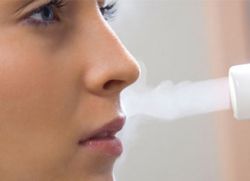
Inhalations with dioxidine (an antibiotic) for rhinitis are used only by doctor's prescription, in the presence of a bacterial infection. Inhalation with the above drugs should be done using a nebulizer, as simply adding them to the water does not give the desired effect. Fukortsin or Malavit (herbal preparation) can be used for steam inhalation, and for inhalation using a nebulizer.
Inhalations remain a recognized effective method for the treatment of rhinitis and accompanying wet cough in children. Popular methods of inhaling steam from hot potatoes or herbal decoction are increasingly being replaced by the use of special safe devices. Let us understand the effectiveness and proper treatment with steam inhalation and nebulizers.
Inhalation as a method of treatment and inhalers
Inhalation is a method of administering drugs by inhaling steam, gas or smoke.
Natural inhalation is the inhalation of fresh air in a forest or sea air at a resort.
Artificial inhalation involves the use of inhalers.
Types of inhalers:
- compressor nebulizer type;
- ultrasonic nebulizer;
- electronic mesh nebulizer.
The last 3 types of inhalers create a cool mist with very small particles (aerosol) and are especially effective in treating lower respiratory tract (larynx, trachea and bronchi). And steam inhalers are successfully used for diseases of the upper respiratory tract (nose and pharynx), since warm steam has a beneficial effect on the nasal mucosa and thins the mucous secretions.
Video: how to choose an inhaler for a child
There is also a method of inhalation, as "breathe over the potatoes." Specialists treat it extremely negatively, since the temperature of the steam is too high and there is a strong risk of burning the respiratory tract of the child.
Nose Pencil Inhaler
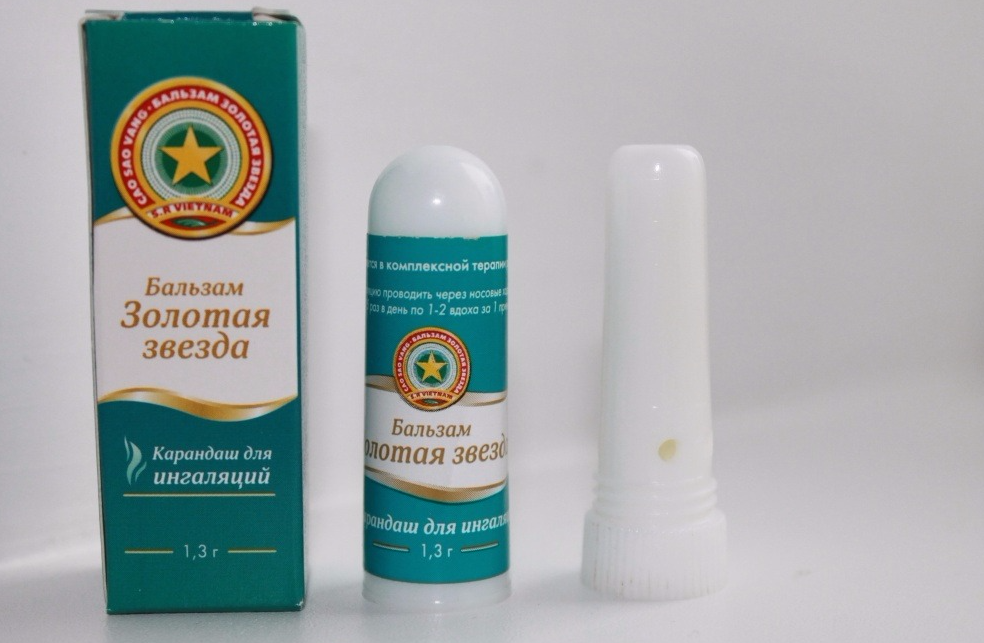
The easiest and most affordable, but not the safest kind of inhaler
This is a hollow plastic rod, at the top of which there is a large hole. Inside the core there is a filter filled with a composition similar to the balm “Star” made from various essential oils: menthol, camphor, peppermint, eucalyptus, clove and cinnamon oil). With colds, the inhaler-pencil is used up to 15 times a day, each time you need to take two deep breaths. It should be borne in mind that essential oils are contraindicated in children under 5 years old, they can cause an allergic reaction, so you should consult with your doctor before use.
Steam inhaler
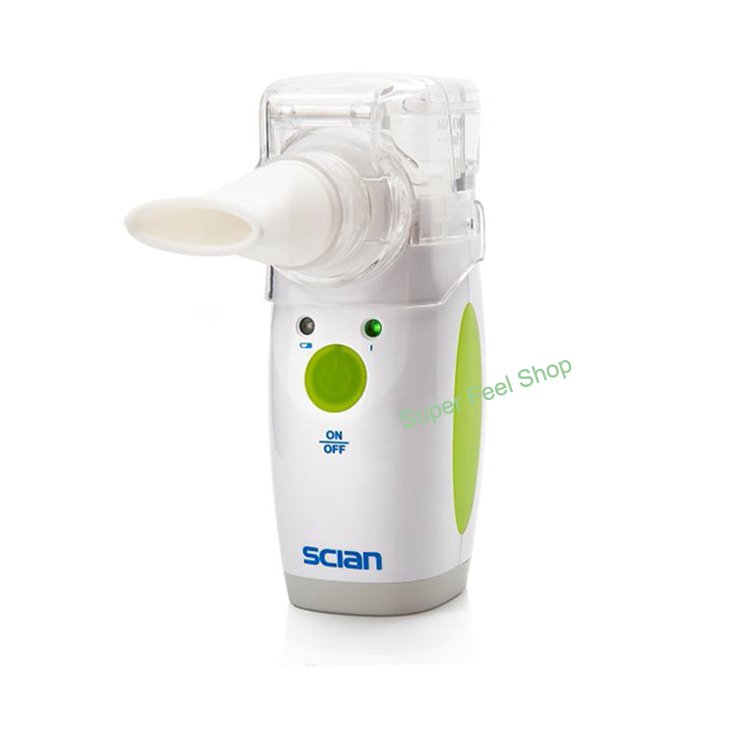 Portable Steam Inhaler
Portable Steam Inhaler 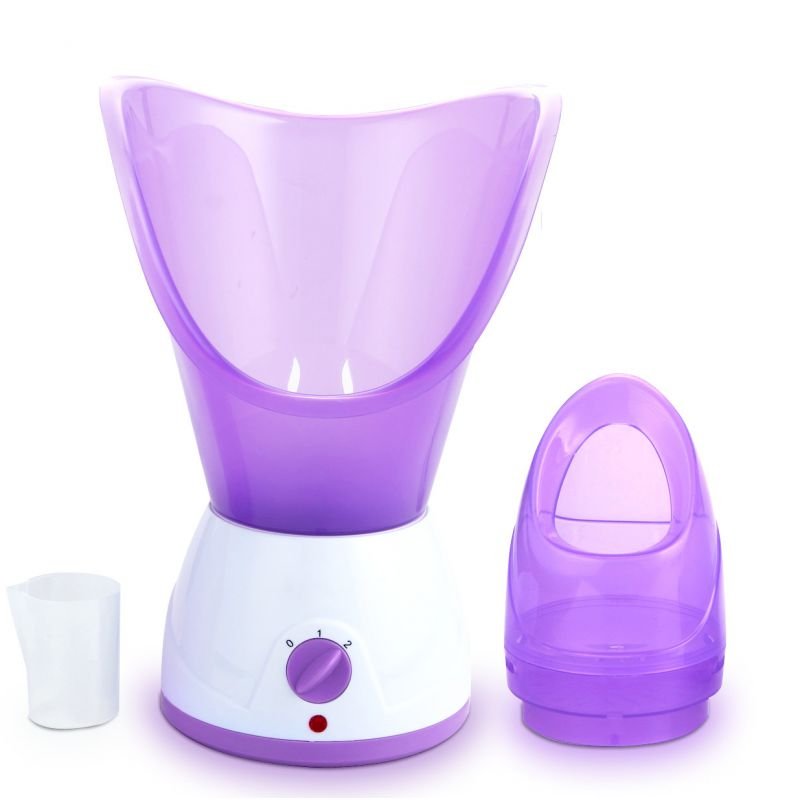 Steam inhaler with different nozzles
Steam inhaler with different nozzles 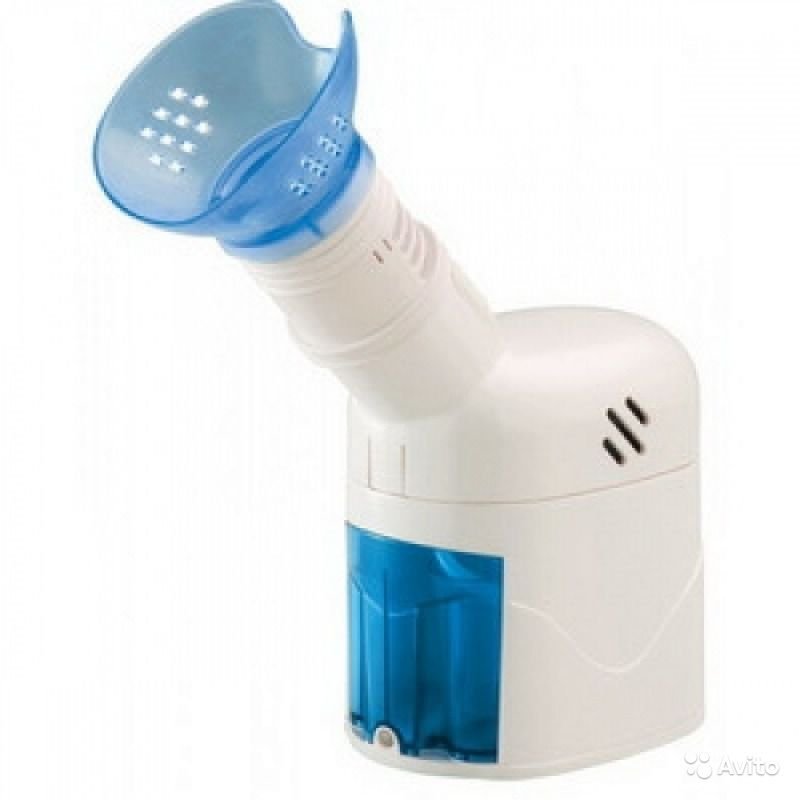 Stationary steam inhaler
Stationary steam inhaler
The principle of operation of steam inhalers is that the liquid is heated and sprayed in the form of warm steam. The advantage of this inhaler over folk remedies for the treatment of rhinitis is that it can be used for children older than one year by prescription. Steam moisturizes the nasal mucosa and helps cleanse it. If there is no dried mucus in the nasal passages, then there is no need for steam inhalation.. Since steam is aimed at moisturizing, steam inhalers are also well suited as a prevention of rhinitis for moisturizing the nasal mucosa. Their disadvantage is that when heated, many medicinal substances are destroyed.
Opinion of doctors about steam inhalation with a cold
Steam inhalations are used to moisturize the nasal mucosa and accumulated sputum. As a result, you can clear your nose and cough up sputum. Dry mucus is moistened and as a result increases in volume, so steam inhalations in children can provoke airway obstruction.
Modern medicine cannot prove that steam inhalation is beneficial. Steam inhalation affects only the upper respiratory tract. They can help only with light and short-term ARI (rhinitis, tonsillitis, pharyngitis, laryngitis). It is not surprising that for a disease that lasts 3–5 days without treatment, it is almost impossible to prove the effectiveness of any treatment method.
O. E. Komarovsky
How to use the steam inhaler correctly
The steam inhaler consists of a reservoir for the heater, where boiled water is poured with the help of the enclosed cup, and a container for a medicinal solution, mineral water, or herbal infusion. The suction tube should be attached to the outlet and inserted into the solution tank. After the mask is attached to the top cover, you can turn on the device. For diseases of the nose, inhalation and exhalation of vapors is carried out by the nose. The duration of the procedure is 5-10 minutes, the frequency depends on the means used for inhalation. The glass and mask after each use should be washed and dried, and it is better to soak them in a special disinfectant solution and then rinse in boiled water.
How solution can fill the tank
The use of steam inhalation for the treatment of rhinitis should be carried out with the permission and on the recommendations of the doctor, taking into account possible contraindications. The solution of the drug or any other liquid for inhalation must be sterile, otherwise there is a risk of bacterial infection of the respiratory tract in a child.
A liquid suitable for inhalation, as well as the very expediency of such treatment, should be determined by a pediatrician or otolaryngologist.
There are many different tools that add to the capacity of a steam inhaler for the treatment of colds:
- saline;
- mineral water;
- kalanchoe juice solution;
- a solution of onion juice or garlic;
- honey solution;
- herbal infusions;
- sea water.
Inhalation with saline and high-quality mineral water are the safest and most effective.. Saline is a universal remedy against nasal congestion. It can also be buried in the nose, and poured into the capacity of the inhaler. Saline in the form of steam contributes to the dilution of mucus in the nose. Sea water has a similar effect as saline.
Inhalation with Kalanchoe juice has antiviral and anti-inflammatory effects. In 5 ml of water or saline, you must add 1 ml of Kalanchoe juice.
Inhalations with onion and garlic juice have antiviral effect and effectively fight colds. In 5 ml of water or saline add 3 drops of onion or garlic.
Honey has an antiviral effect: dissolve 1-2 teaspoons of honey per 100 ml of water. For one inhalation, you must use 5 ml of solution. Honey is an allergenic product, so you should consult with your doctor.
Folk recipes herbal infusions
With a cold child, you can make an infusion of lavender, thyme, sage, coltsfoot, chamomile. Herbs take in equal amounts. Brew (better in a thermos), the bay about 50 g of dry grass collecting a liter of boiling water.
There is also a recipe for inhalation based on eucalyptus leaves: 1 tablespoon of 500 ml boiling water is poured and cooked for about 10 minutes. Then the broth is cooled to 35 degrees. But this recipe is more suitable for older children, as eucalyptus has a rather strong odor and can cause an allergic reaction.
Using a similar technology, it is possible to prepare mother-and-stepmother infusion (per 200 ml of water, 15 g of dry raw material) or decoction of blackberry stalks and leaves (per 200 ml of water, 20 g of stalks and leaves).
Can not be used for steam inhalation essential oils. Inhalation of these highly concentrated substances may cause a spasm of the small bronchi and laryngism, the child will begin to choke.
Video: Dr. Komarovsky talks about the benefits of steam inhalation
The therapeutic effect will be more pronounced and persistent if the parents also wash the child's nose with saline solutions, regularly ventilate the room and use an air humidifier, especially during the heating season.
Contraindications for steam inhalation
If moisturizing the mucous helps to eliminate nasal congestion, then we are talking about the physiological or allergic rhinitis. But a runny nose may be viral in nature with accompanying symptoms of ARVI. At high temperature inhalation can not be carried out. If the viral rhinitis is not accompanied by fever, steam inhalation may be used for better discharge of mucus from the nose. Since, for a better course of the disease, it is necessary to remove snot from the nose, after steam inhalation, you can use an aspirator to eliminate the discharge if the child cannot yet blow his nose.
Inhalation is contraindicated for the following symptoms:
- child's body temperature exceeds 37.5;
- children up to 1 year;
- bacterial infection;
- a hint of blood in sputum;
- ear pain or congestion in them;
- epistaxis or tendency to them;
- cardiovascular or respiratory failure;
- individual intolerance to drugs (allergic reaction).
Video: when you can not do steam inhalation
Use of nebulizers
The use of nebulizers is preferable if the runny nose is delayed and threatens with complications, or in the case when the snot in the child is one of the symptoms of a more serious disease. With the help of a nebulizer, you can conduct a comprehensive treatment that affects both the upper and lower respiratory tract.
Compressor type
This type of inhaler has a compressor, through which an aerosol is formed with particles from medium to small size, penetrating into the large and small bronchi. Compressor inhalers are the most versatile compared to other nebulizers, as they can disperse almost all medicines.
Unlike steam, the compressor inhaler allows to add a wide range of drugs to liquid  The only drawback of the compressor nebulizer is that it is quite noisy at work. The most versatile nebulizer with an attractive children's design
The only drawback of the compressor nebulizer is that it is quite noisy at work. The most versatile nebulizer with an attractive children's design
Ultrasound type
Ultrasonic inhalers create a very fine aerosol (particles up to 5 microns) during the vibration of an ultrasonic generator. Particles can even penetrate into the bronchioles. The advantage of an ultrasonic inhaler is that it can develop high performance aerosol production and in 15 minutes of operation it sprays 15-30 ml of solution. In addition, unlike the compressor, this type of inhaler has a small weight and size.
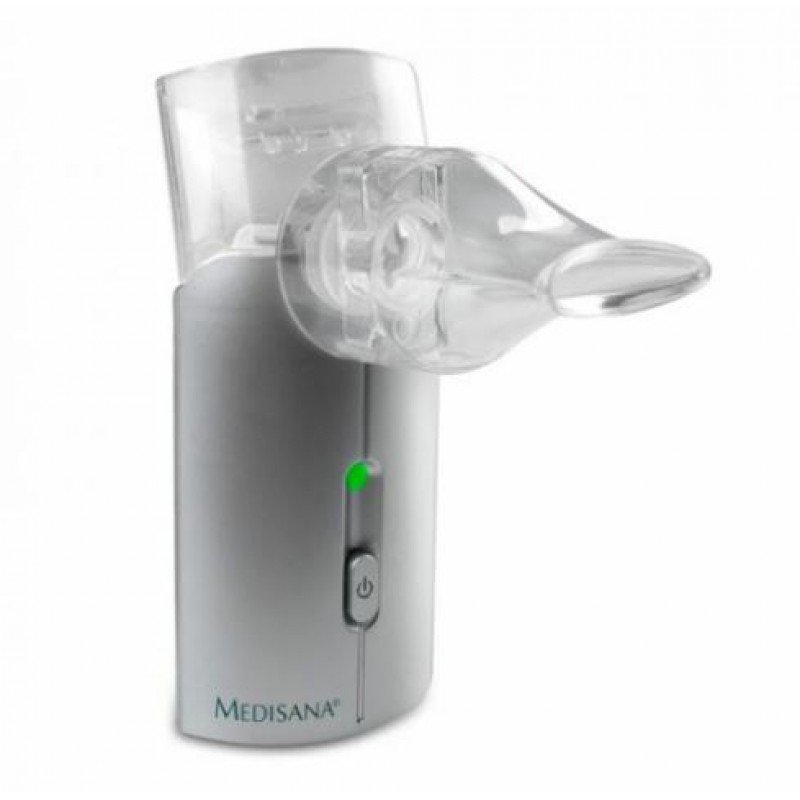 Ultrasonic inhaler is lightweight and lightweight.
Ultrasonic inhaler is lightweight and lightweight. 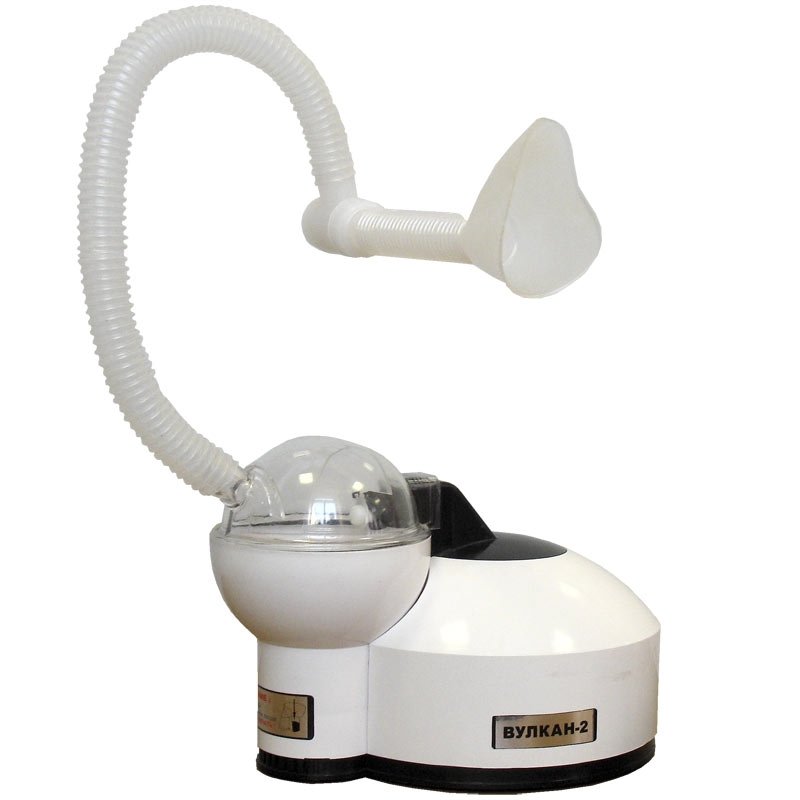 Ultrasound creates very fine aerosol particles (up to 5 microns). Inhalers of this type work silently.
Ultrasound creates very fine aerosol particles (up to 5 microns). Inhalers of this type work silently.
Electronic mesh type
This type of inhaler has the additional name "inhaler with mesh technology." The aerosol is created in it based on low frequencies. Therefore, electron-mesh inhalers allow the use of much more drugs for treatment: hormonal drugs, antibiotics, mucolytics.
 The mesh inhaler is considered universal because it is suitable for a wide range of drugs. Like an ultrasound, this nebulizer works silently.
The mesh inhaler is considered universal because it is suitable for a wide range of drugs. Like an ultrasound, this nebulizer works silently. 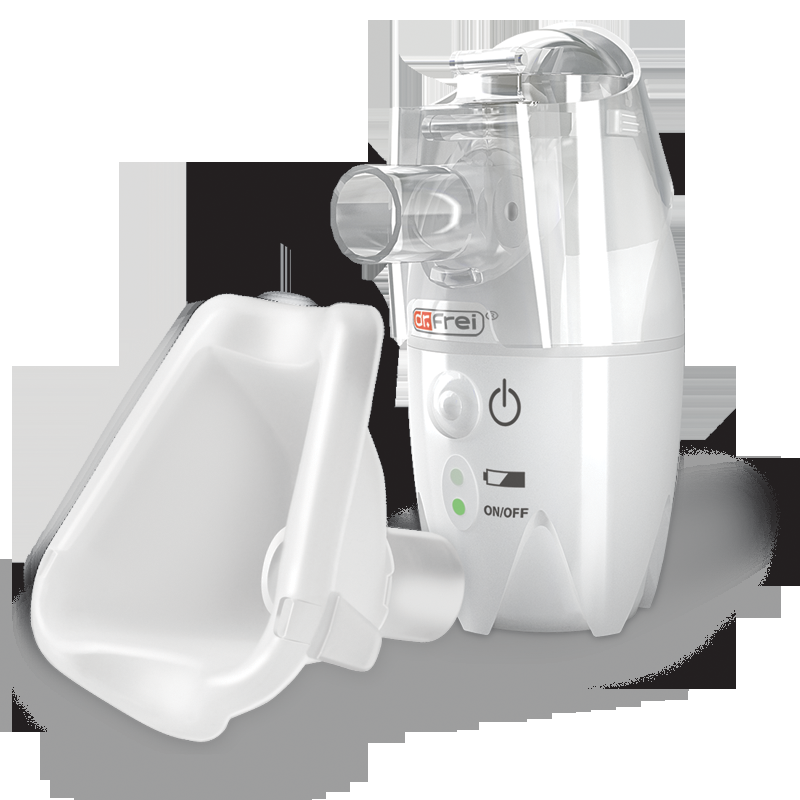 This type of inhaler has the highest cost.
This type of inhaler has the highest cost.
Opinion of experts
O.E. Komarovsky:
With the usual ORVI there is no need for a nebulizer. It is necessary to breathe air with normal humidity constantly or with high humidity at least occasionally.
As for serious diseases of the respiratory system, nebulizers are quite an effective tool that can quickly deliver medicine to the lower respiratory tract. But in this case, it is necessary to monitor the doctor and follow all his recommendations.
The advantage of nebulizers over other inhalers is that they can be used in the first year of a child's life.
We treat a runny nose and not only
As a rule, high-quality nebulizers effectively cope with diseases of the upper and lower respiratory tract. The most popular liquid for the treatment of rhinitis or unresolved dry cough is saline or mineral water. They can add drugs in solution, if they are prescribed by a doctor.
In addition, inhalation can be carried out with herbal infusions. But not all nebulizers can spray them, so you need to read the instructions for the device.
Oily mixtures are prohibited in most nebulizers due to the risk of pneumonia. The oil, breaking up into tiny particles, can settle on the small bronchi and cause a mechanical blockage, which will lead to pulmonary edema and inflammation.
Table: The main drugs used in the nebulizer, their approximate dose and contraindications
| Drug | Act | Contraindicated use in children | Main contraindications | |
| Bronchodilators | Berodual | breathing relief | the decision is made by the doctor | |
| Astalin | up to 2 years | |||
| Berotek | up to 6 years |
|
||
| Mucolytics | Ambroxol | thinning mucus and promoting sputum discharge | up to 5 years |
|
| Fluimucil | up to 6 years |
|
||
| Pulmozyme | up to 5 years |
|
||
| Saline | moisturizing the mucous membranes and promoting sputum discharge | not contraindicated |
|
|
| Mineral low alkaline water | Narzan | not contraindicated |
|
|
| Borjomi | ||||
| Hormonal drugs | Pulmicort | decrease in the activity of the inflammatory process in the respiratory tract | up to 6 months |
|
| Cromohexal | up to 2 years | |||
Drugs are used only as prescribed by a doctor strictly in the recommended dosage, either in pure form or diluted with saline or water in certain proportions.
Treatment of rhinitis with inhalation is quite effective, especially if this procedure is carried out in conjunction with the general medical treatment. Treatment of chronic rhinitis is carried out mainly with the help of inhalations, in this case the specified agent is even stronger than the use of anti-inflammatory drugs. Most doctors recommend inhalations for children with a cold. This physiotherapy does not cause any harm to babies and is an effective way of getting rid of a malicious virus. What inhalation to do with a cold?
- Inhalation of a cold with a nebulizer. The nebulizer has now become widely known. This drug is very effective in eliminating viruses and infections. The main advantage of the nebulizer is that it is effectively used in the common cold at any stage, including allergic or chronic rhinitis. Does an inhaler help with a cold? Undoubtedly, treatment of rhinitis with an inhaler performs several healing functions: eliminates burning and itching, moisturizes the nasal mucosa, promotes the discharge of mucous accumulations, facilitates breathing. Inhaler through the nebulizer with a cold helps to quickly eliminate the inflammatory process, by reducing the swelling of the mucous. Medication for an inhaler for a cold can be different, as a rule, the doctor should advise him. But you can choose your own solution for inhalation with a cold, for this you need to consult a pharmacist at the pharmacy.
- Inhalation of saline with a cold. This procedure is carried out in medical institutions. The patient, after the examination of the doctor, receives the main drug treatment and additional physiotherapy. One of the procedures can be treatment with an inhaler. Physical saline is selected in each case individually for each patient, it depends on the degree of the disease and on the type of rhinitis. As a folk saline solution, you can use sea buckthorn juice or kalanchoe, mixed with purified water.
- Inhalation of rhinitis with soda. How to treat a cold inhaler? Everything is very simple, as the solution for the inhaler are selected active substances that have powerful healing power. One of these substances is soda. It actively affects the nasal mucosa, reducing puffiness, eliminating inflammation and easing breathing. Together with soda inhalation, you can rinse your mouth with a solution of soda, from which the healing effect of the product will increase. Soda solution can be poured into the device inhaler, and you can arrange steam inhalation with soda.
- Inhalation of potatoes with a cold. This recipe applies to traditional methods, but its use is also common among medical drugs. For inhalation, several tubers are boiled and the patient breathes “potato” steam. Good potato inhalation during pregnancy with a cold. They will never cause harm, but effectively save the future mother from the disease. The benefits of potato inhalations are that in this vegetable there are active ingredients that are destructive in nature for various types of bacteria and viruses. In addition to pregnant women, such potato inhalations are acceptable for children.
- Inhalation with Dioxidin at a cold. An antibacterial solution for inhalation with a head cold is necessary when the disease takes on a protracted nature. In this case, antibiotic treatment is required. The most common method of treating a runny nose with inhalations with an active solution is saline with Dioxidin. Dioxidine is a very powerful remedy, therefore it is allowed to use it only on the recommendation of a doctor. The solution may cause side effects in the form of headache, dizziness or nausea. If this happens, then the further use of inhalations with Dioxidin is not recommended. The specified saline solution is often used to treat rhinitis associated with sinusitis or sinusitis.
- Steam inhalation with a cold. When a problem arises than to make inhalation from a cold, the solution lies in a simple way. Steam inhalations are very effective, they are especially good for young children. For older children, you can use steam inhalation, in which essential oils are dripped or herbal decoctions are mixed in.
Herbs for inhalation with a cold. Herbs - a kind of medicine for inhalation with a cold. In ancient times, when there were no appropriate drugs, people were treated with steam decoctions of herbs. They simply inhaled the hot vapor through the nose, after which the healing action of the latter took place. At the present time, decoction of herbs can be used as a solution for an inhaler. Advantages - weight: reduction of swelling and nasal congestion, removal of the inflammatory process, elimination of infection. The most popular medicinal herbs are: chamomile, coltsfoot, St. John's wort, calendula, etc.
Oils for inhalation with a cold. Similar to the above method, you can apply essential oils. A few drops of the active product are dripped into the water for inhalation, then the person performs the main action of treatment with an inhaler. Among the oils, the most miraculous are: sea buckthorn or kalanchoe oil, eucalyptus or menthol oil, clove and juniper oil.
Inhalation with eucalyptus at a cold. What to do inhalation with a cold? If the patient has the strongest nasal congestion, then you can use inhalation with eucalyptus oil. Due to its unique substances, eucalyptus oil is a natural bactericidal agent, it is able to completely destroy the disease in several sessions. Additionally, with inhalation procedures, you can rinse the nose with chamomile decoction with the addition of a few drops of eucalyptus essential oil.
How to fill the inhaler with a cold? Healing remedies for this case are many, it is important that they do not cause negative effects in the patient. If after treatment there is a deterioration in the patient's condition, then the use of funds is prohibited.
Preparations for inhalation with a cold are several species ratios. But in any of them there must be a sheet with annotation. High-quality and certified inhalers, it is desirable to purchase in a pharmacy.
